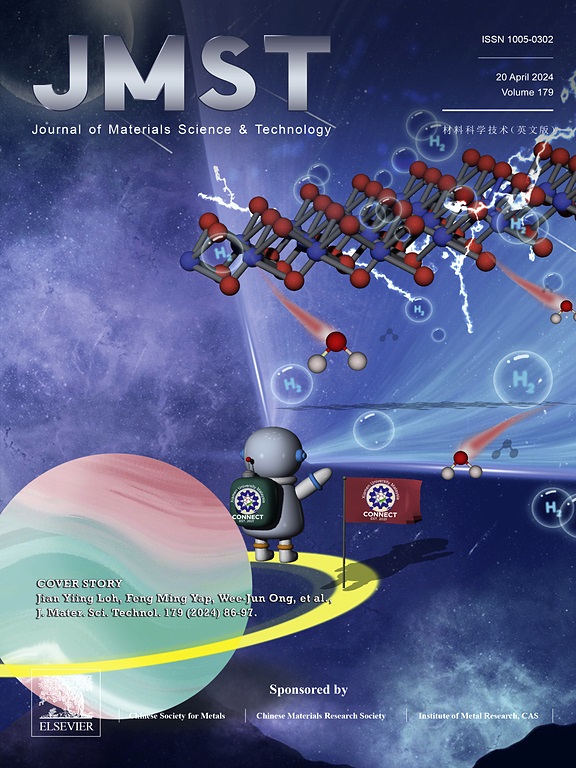Mechanical properties and deformation behavior of Mg-Al-Zn alloy laminate with multi-scale heterostructures
IF 11.2
1区 材料科学
Q1 MATERIALS SCIENCE, MULTIDISCIPLINARY
引用次数: 0
Abstract
Heterostructured materials as a new class can effectively avoid the inverted relationship of the “banana” curve followed by strength-ductility. The difference in grain size is the mainstream idea of the design of heterogeneous zones. However, the synergistic strengthening mechanism and deformation behavior among multi-scale heterostructures are still unclear. In this work, AZ80/AZ31 laminate with a multi-scale heterogeneous distribution of grain size, precipitates, and texture between alternate AZ31 and AZ80 component layers, which was constructed by accumulative extrusion bonding combined with aging treatment. The composite samples after 2-pass extrusion presented an outstanding strength-ductility synergy, which was attributed to the joint action of texture softening and hardening, grain refinement as well as multistage heterogeneous deformation induced (HDI) strengthening and hardening. Multi-types of heterogeneous regions provided more sites for geometrically necessary dislocation accumulation to accommodate multiple strain gradients under the constraint of multi-layer interfaces, enhancing HDI stress. The synergistic effect of great Schmid factor difference and increasing geometric compatibility factor between adjacent grains at the layer interface led to strain transfer behavior, which facilitated strain delocalization. This work expands the design ideas and preparation methods of heterostructured materials and enriches the theory of heterogeneous deformation.

求助全文
约1分钟内获得全文
求助全文
来源期刊

Journal of Materials Science & Technology
工程技术-材料科学:综合
CiteScore
20.00
自引率
11.00%
发文量
995
审稿时长
13 days
期刊介绍:
Journal of Materials Science & Technology strives to promote global collaboration in the field of materials science and technology. It primarily publishes original research papers, invited review articles, letters, research notes, and summaries of scientific achievements. The journal covers a wide range of materials science and technology topics, including metallic materials, inorganic nonmetallic materials, and composite materials.
 求助内容:
求助内容: 应助结果提醒方式:
应助结果提醒方式:


